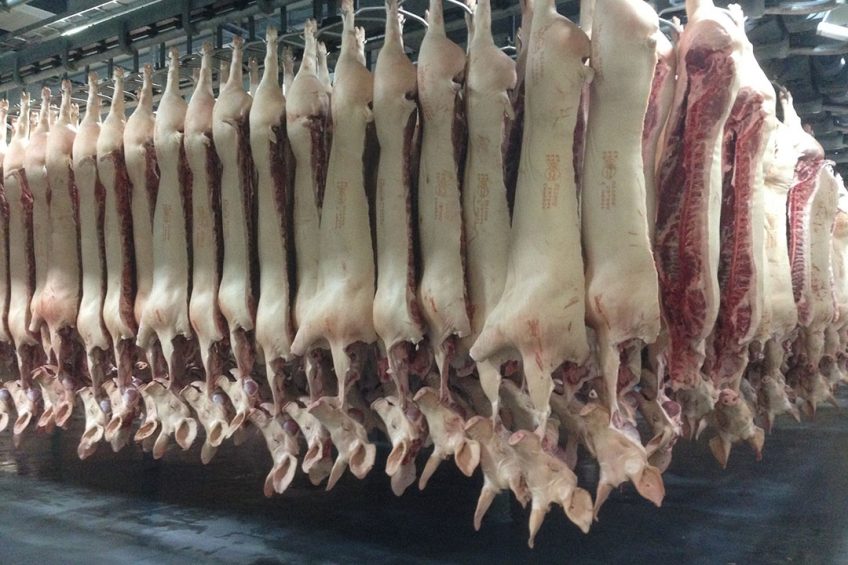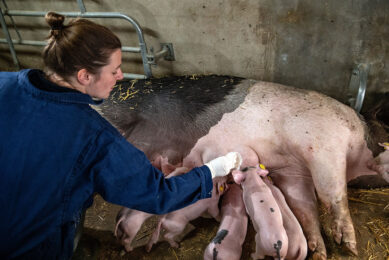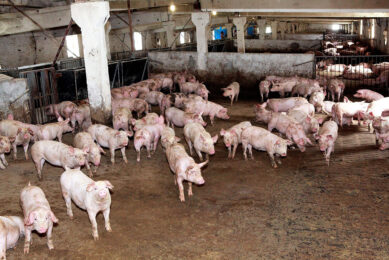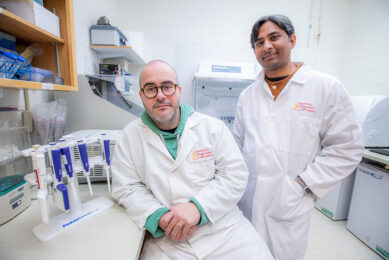Covid-19: US pork processing rebounds to 95% of 2019 level

Pig processing continues to rebound in the US and Canada, and the number of pigs slaughtered in the US last week slightly exceeded the number of the same week last year. A record was set in April for hog export value, and financial assistance is being rolling out to farmers across the US. These are the main Covid-19 developments in North America this week.
In the spring of 2020, Covid-19 caused a sharp decline in North American pork packing plant capacity through worker infections, temporary closures and the implementation of distancing and other measures. Whilst the backlog may still require that up to 10 million hogs must be euthanised in 2020, US secretary of agriculture Sonny Perdue announced this week that as of June 9, the nation’s pork processing facilities were operating at 95% of 2019 capacity.
However, pig farmers such as Chad Leman believe pork plants must run at 120-130% of capacity “to begin to work through the backlog”, he said at AgWeb. He cautioned that “just because the plants are running normally, or close to normal, that does not fix the problem”.
Number of US pigs slaughtered exceeds 2019
Last week, the number of pigs slaughtered in the US reached 2,452,000, up 42,000 during the same week a year ago.
That number was achieved even though Tyson Foods closed a pork plant in Iowa last week for a couple of days due high numbers of Covid-19 infections among the workers, and only resumed ‘limited production’ on June 3. No other pork plant closures have been reported since, across the US or Canada.
Pork export prices going strong
The April figures for US pork and beef exports have now been compiled by the US Meat Export Federation (USMEF) and they are very positive. Despite ‘Covid-19 related interruptions in production’ and ‘declining purchasing power of some key trading partners’, USMEF stated that April pork exports remained well above 2019 levels. USMEF president and CEO Dan Halstrom believed the stage is set for ‘a strong second half of 2020’ in terms of US red meat production.

Covid-19 Up-date
What impact is the pandemic having on the global pig sector and how are they dealing with it.
Record export value of pig carcass
A record was set in April relating to the export value of a pig carcass. It reached $ 72.55, up 43% from April 2019. The per-head average was $ 66.36 from January-April, up 40% for the same period last year.
Also in April, exports accounted for more of total US pork production (36.2%) and pork muscle cuts (32.2%) compared to 2019, when both were about 10% lower.
Distribution of financial assistance for pork producers
Along with growing slaughter capacity and record export values, US pork producers are also receiving financial assistance from the federal government. On June 4, the US Department of Agriculture’s Farm Service Agency (FSA) had already approved more than $ 545 million in payments to producers who applied for the Coronavirus Food Assistance Program.
This programme addresses the needs of producers who have suffered a 5% or larger price decline due to Covid-19 and face additional significant costs as a result of lower demand, surplus production and/or disruptions to marketing and shipping.

Every week, Pig Progress wraps up the Covid-19 situation in North America.
What happened last week?
Over 86,000 applications
FSA has received over 86,000 applications since the programme opened May 26 and made over 35,000 payments in the first 6 days. The agency will accept applications through August 28, 2020.
Pig euthanasia compensation expanded in Iowa
Meanwhile on June 9th, pig farmers in Iowa (the US state with the highest pork production) got more good news. Iowa secretary of agriculture Mike Naig announced that financial assistance for pork producers who were forced to euthanise their animals due to Covid-19 supply chain disruptions would be expanded. Producers can now apply for retroactive funding for hogs that were euthanised between May 1-25th, instead of just after May 25th.
‘More economic assistance’ for farmers
Despite the assistance being received however, Perdue University scientists James Mintert and Michael Langemeier released results of a recent survey that found 2/3 of US farmers “think it will be necessary for Congress to pass another bill to provide more economic assistance to US farmers”.
Worry about finances
The survey, conducted in May, found that worry about finances was up somewhat compared to the month before. Over 70% of farmer-respondents were either very worried (34%) or fairly worried (37%) about the impact of coronavirus on their farms’ profitability. “The top-2 concerns among farmers about the virus impact on their farms continue to be,” stated Mintert and Langemeier, “market access and financial.”

Which ASF lessons did the pig feed industry apply during the Covid-19 pandemic?
New proposed pork plant in Saskatchewan, Canada
In the city of Moose Jaw, SK, Canada, the proposed conversion of a former beef packing plant to processing pork is inching closer to reality. The shuttered plant was recently purchased by Donald’s Fine Foods, which already operates a pork plant in Moose Jaw as well as one in Langley, BC.
100 new jobs
Farmscape media outlet reports that response to the proposed project has been positive, in part because it would result in 100 new jobs. However, Neil Ketilson, industry relations manager with Donald’s Fine Foods, pointed out additional benefits to boosting domestic capacity for pig slaughter in light of the fact that most Canadian pigs are exported to the US for processing.
In short, this new plant in Moose Jaw would save producers transport costs and also reduce risks related to transport truck biosecurity and US border closure. Results of a feasibility study on conversion of the plant are hoped for by end of July.











